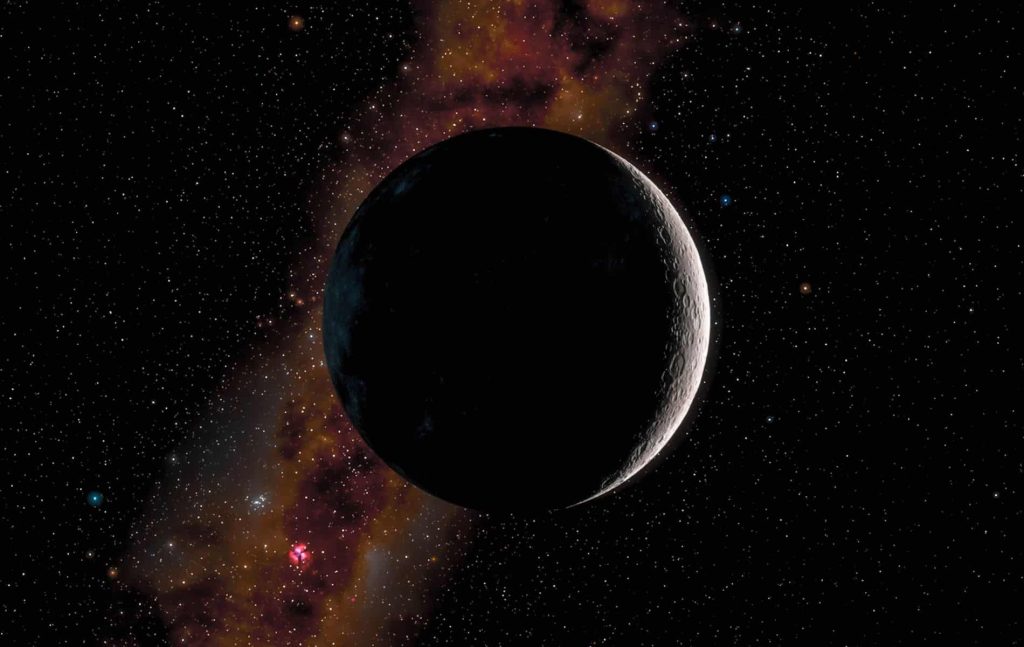Exomoons hold great promise in the search for life. But discovering the first will have to wait a while.
In our solar system, it is quite normal for planets to be accompanied by one or more moons. Except for Mercury and Venus, all other planets have this type of companion. Even the gas giant Saturn ranks first, with no less than 140 natural satellites! Therefore, scientists assume that it is very likely that planets in distant star systems also have moons. The only tentative evidence for this has been found around the exoplanets Kepler-1625b and Kepler-1708b. However, a new study now casts doubt on these previous claims. “We wanted to confirm the discovery of exomoons around Kepler-1625b and Kepler-1708b,” says first author of the new study, René Heller. “But our analyzes unfortunately show something different.”
Exomoons around Kepler-1625b and Kepler-1708b?
Five years ago, the Jupiter-like planet Kepler-1625b was in the news. Scientists have discovered strong evidence of the presence of a huge moon in its orbit, which would outshine all the moons in our solar system. Last year, this fascinating candidate was joined by a giant moon orbiting the Jupiter-like planet Kepler-1708b, according to scientists.
More about the difficult search for exomoons
To date, scientists have discovered an impressive 5,300 exoplanets. However, tentative evidence of exomoons has only been found on two of these thousands of exoplanets. It’s actually not surprising that the return is so low. Naturally, distant moons are much smaller than their planets, and therefore more difficult to detect. Moreover, combing through observational data from thousands of exoplanets for evidence of moons is an extremely time-consuming task. However, researchers can’t wait to discover them. This is not surprising when you consider that the best candidates for extraterrestrial life in our solar system are moons. This may also be the case in systems outside our solar system. Good reason to continue searching for these exomoons.
Essentially, the exoplanets Kepler-1625b and Kepler-1708b are thought to be the home worlds of the first known exomoons. but New study It now appears to invalidate this happy news.
Mild curves
“The exomoons are so far away that we can’t see them directly, even with the most powerful modern telescopes,” Heller explains. Instead, telescopes monitor fluctuations in the brightness of distant stars. This series of changes is called the light curve. The researchers then look for evidence of the presence of moons in these light curves. When an exoplanet passes in front of its star as seen from Earth, it causes a slight dimming of the star. This phenomenon is known as a transit, and it repeats regularly, coinciding with the orbital period of the planet around the star. If there is an outer moon accompanying the planet, it will cause a similar eclipse effect.

Too bad, not at all
In the new study, the researchers used a newly developed computer algorithm, called Pandora, which makes the search for exomoons easier and faster. But instead of confirming the existence of extrasolar moons around Kepler-1625b and Kepler-1708b, they made another very shocking discovery. The research team found that observations of Kepler-1708b can be explained as well without a moon as with one. “The probability of a moon orbiting Kepler-1708b is much lower than originally thought,” said researcher Michael Hippke. “The data show that there is no evidence of an exomoon around Kepler-1708b.” Furthermore, there are strong indications that Kepler-1625b may not have a massive companion either.
False positive results
This means that the discovery of the first exomoon still has to wait some time. As if that wasn’t disappointing enough, new in-depth analyzes also show that the exomoon will be extremely difficult to track down. Exomoon search algorithms often produce false positives. Time and again, researchers have discovered a moon, when in reality it is just a planet passing in front of its parent star. With a curve as gentle as that of Kepler-1625b, the chance of “false positives” is probably about 11 percent. “According to our estimates, a false positive result is not at all surprising, but almost expected,” Heller concludes.
Exceptionally large
The scientists also used their algorithm to predict the types of exomoons that could in principle be found using astronomical observations. According to their analysis, only exceptionally large moons that orbit their planet in wide orbits can be detected using current technology. Compared to known moons in our solar system, these exomoons would all be “outliers”: at least twice the size of Ganymede, the largest moon in our solar system.
Meanwhile, the search for exomoons continues unabated. And the idea that the first exoplanet moon discovered could be so unique may only serve to increase scientists’ enthusiasm for actively searching. “The first exomoons we discover in the future will undoubtedly be unusual, and therefore potentially very exciting to explore,” Heller concludes.

“Coffee buff. Twitter fanatic. Tv practitioner. Social media advocate. Pop culture ninja.”











More Stories
Which can cause an increase in nitrogen.
The Central State Real Estate Agency has no additional space to accommodate Ukrainians.
The oystercatcher, the “unlucky national bird,” is increasingly breeding on rooftops.